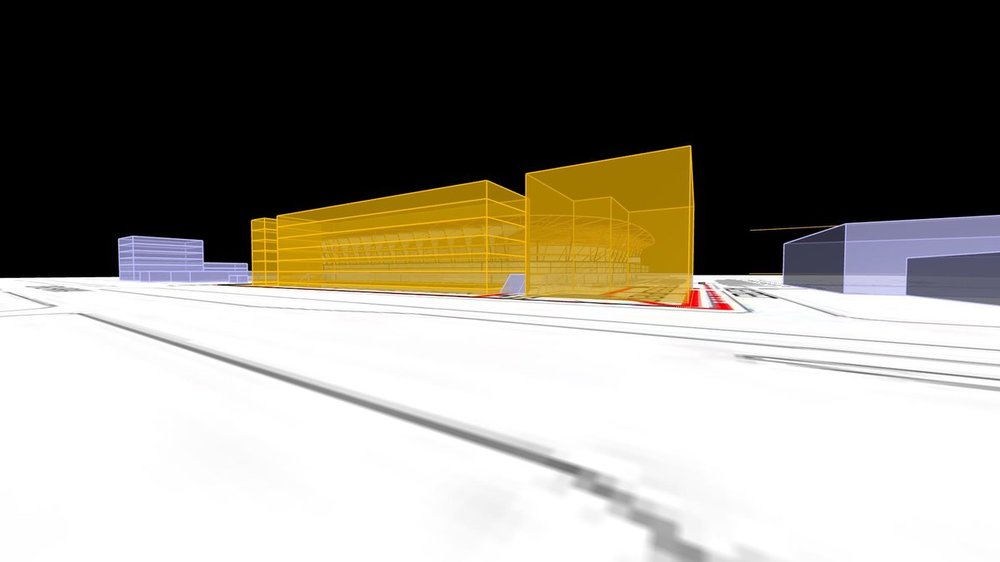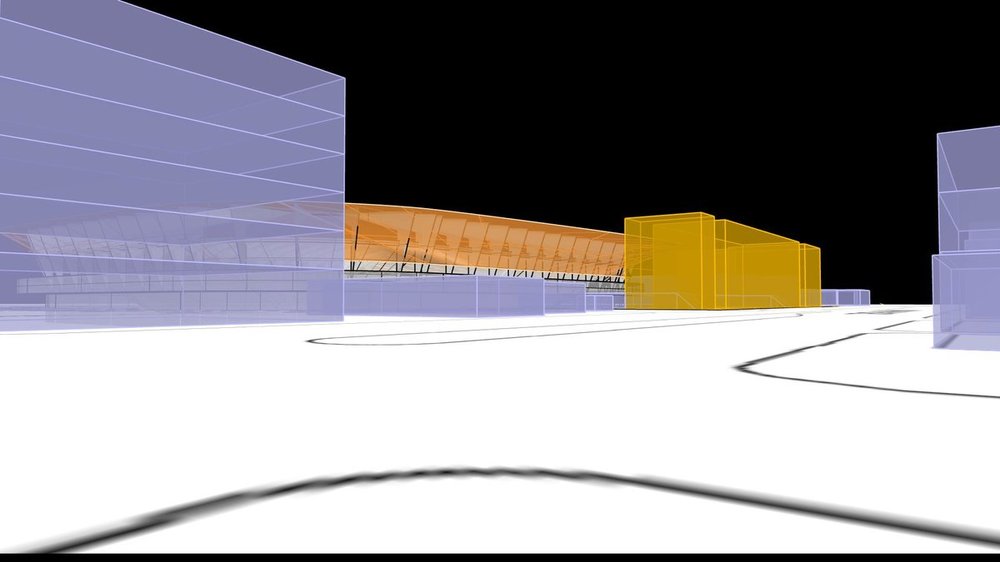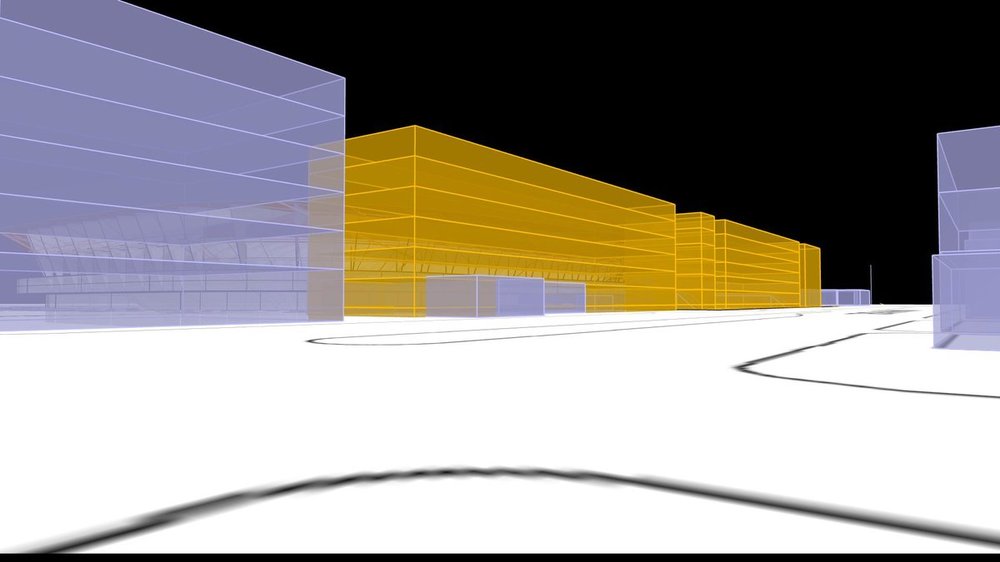Everything posted by Chas Wiederhold
-
Smells of the City
Living on the western edge of OTR, I get a lovely combination of Samuel Adams Brewery scent mixed with a brine-y Kaiser Pickle scent. I wish I could say that I love pickles. The ability to appreciate the scents is a good litmus test as to whether or not you will be a good neighbor, IMO.
-
Cincinnati: Downtown: The Banks
If it stays, a permanent base would have to be designed... I love seeing a Ferris Wheel in the center of downtown on axis with Roebling. I do not love a shipping container and temporary fencing. I would want a finish similar to that of the building the carousel is in for accessory structures and the required fencing.
-
Cincinnati: Pendleton: Development and News
Could we rename it "Infill in Historic Neighborhoods"?
-
Infill in Historic Neighborhoods
I love that entry, but when I lived in Calhoun we were prohibited from using it, and I believe it remains that way today. I imagine it disappears in the re-cladding of the building which was supposedly planned, but I haven't heard anything about it for a while. I wish they would keep it how it is, just update the windows and repair the brickwork. I love how Calhoun, Siddall, Dyer, and the YMCA all work with each other materially. I might even be so bold to say that Calhoun and Siddall are examples of good infill even though they are a shift in scale from their surroundings:
-
Cincinnati: Downtown: Fourth & Race (Pogue Garage) Redevelopment
I saw the crane coming down at "The Deacon" this weekend. Do different companies try to phase their projects to take advantage of one crane coming down, so that another can go up? if so, maybe that crane is headed here or to 8th and Main next.
-
Infill in Historic Neighborhoods
? I really do believe that the difference between neo and faux comes down to material used and method of construction. Neo includes anything using either or both material or method of the original. Faux does neither, but looks like the original. Contextual contemporary chooses one or the other and might not look like the original, but does reference the original. <-Haven't written a white paper on this... just straight up conjecture. You might consider the new business school a neo-brutalist building, or just a straight up brutalist building (because its height wasnt that long ago). A style that many folks just don't have an appetite for, but in the end, they've used high quality materials, a really exciting, diagrammatic program organization (that references the Hargreaves master plan, that references the original street grid), and been delicate with the budget enough to include green roofs and courtyards. I think the majority of the public is going to be very pleased with what they encounter when visiting this building and not just judging it based off of what they prefer stylistically. Personally, I am a fan of Marian Spencer Hall because of its brickwork, which was laid using an innovative brick laying technology that allowed for a more textured surface, and the way it contrasts the two glass towers... and I'm not just saying that because I work at the firm that designed the building. Take a close look at the brick. I'd love to use the same brick laying tech on an infill project in OTR/Pendleton. I'll defend it. Post-modernism is not faux historicism as many professors in the late 90's and 00's might explain to their students with snarled noses. It's a playful breaking of formal rules imposed by modernism's rigid cannon and the further I get away from academic circles (as much as I can considering I teach in the arch/int des program now) the more I appreciate it for what it is doing. Now... the interior of the building leaves much to be desired, except for maybe the main lobby. Graves oscillated between formality and informality and in the end, let formality control too much on the exterior, creating odd window conditions and room configurations on the interior... but maybe that's part of the post-modern joke as well. And in the spirit of joking about whether or not people with architecture degrees are allowed to speak with confidence on the subject of architecture I am mockingly posting this meme because I assume its how some think all of the architects on this forum are feverishly pounding on their keyboards. The reality is much different. In summary, I like the conversation we are having about architecture. It is rare that anything is 100% trash or 100% incredible. I like discussing and debating the ambiguity in between.
-
Infill in Historic Neighborhoods
Our physical environments are one of the most important legacies we leave to future generations. Much of anthropological research comes from studying the structures left behind from long gone civilizations. Not all of Corb's ideas were disastrous. Not all of Vitruvius' or Palladio's stand the test of time. The research builds on itself over time and we've got to be contextually critical of it. Just because a building LOOKS like it was built in 1860 does not mean that it was built the same way. It's still a stick built building constructed in 2019 with styrofoam details, brick veneer, and tile in the bathroom with a printed vinyl texture on it that makes it look like you are bathing in a marble bathtub (you're not). Sure, the optics might be nice for people who want to convince themselves that they live in an intact historic district that was never threatened by abandonment and disinvestment, but in a few years, someone or something is going to punch a hole in a brick veneer facade and you're going to see a bunch of green foam underneath and realize how cheap and thin Disneyland/Las Vegas really is. What I appreciate about these new buildings is they at least are expressing how little the developers care about material and details. Material and details cut away from profits and if you are getting any form of government subsidy from the building, you'll be selling it after 17 years anyway... so why use material that lasts any longer than that. TBH, I find it more and more ridiculous that architects even claim/defend/apologize for these buildings when we know well that if the developers valued quality over $quantity$ then we likely would not be having this discussion at all.
-
Cincinnati: Downtown: 1010 On The Rhine / Downtown Kroger
The view where this building makes the greatest impact (IMO) is coasting down Sycamore Hill. Try it out.
-
Infill in Historic Neighborhoods
I'll jump into the foray for a sec. See avatar for qualifications. One of the many reasons architects have great disdain for historicized architecture is that it does nothing to push the field further and definitely does not recognize progress made in the field. Imagine a car company knowing everything they do about new methods of efficiency, safety, structures, etc, and still creating something that looked like a Model T just because the consumer liked the way it looked. Architecture has moved on from the materials and methods from the 1860's. When we design something historicized, it's a lie. It's a Model T for a body, but a Toyota Camry under the hood. Except.. we actually aren't allowed to design you a REAL Model T body because it doesn't pass safety tests (code), it's materials are inefficient (no need too over structure things), you can't afford the cost of the craftsmanship (there is no longer slavery/child labor/7 day work week/or a middle class clientele for architecture) and countless other things that make your car a joke. Architecture tells of the tone and tenor of the time in which it was built. The Contemporary Arts Center, Union Terminal, Music Hall, and Old St. Mary's are each monuments for their own time, but are built using the technology that was at its peak at the time of construction. Domestic architecture can do the same. Walking down the street you can read the progressive story of humanity in an urban place. Do I think greater efforts need to be made to be contemporarily contextual? Yes! Do I get exhausted when architects try to make flamboyant contemporary gestures to make their domestic buildings stand out? YES! Are architecture budgets for most multi-family project clients ever big enough to accommodate quality material and detailing? NO! (VERY RARELY!) A more sensitive approach to this problem is a clever, non-ostentatious attitude toward infill. There are good projects in OTR and Downtown that do this. I don't have to tell anyone that. We must tell the future that we too (people of the oughts and teens and twenties) were ambitious, creative, innovative, tasteful people. fin. ^This is my best effort to summarize a lifetime love and a decade for formal education and practice of architecture. Shit... i just tried to qualify my statement when I told myself not to qualify my statement. Dammit.
-
Cincinnati: Fountain Square: Development and News
Welcome to YouTube. No reason to be derisive.
-
Columbus: Re-branding & Identity
I appreciated the COLUMBUS branding efforts that I saw when visiting the city a couple years ago. Was that for the DNC bid? I think it is subtle, broadly interpretable, progressive, and unconstrained. It also makes a truly special statement: what makes a place a place is the people.
-
Cincinnati: Restaurant News & Info
The Eagle used to broadcast the farm where their chicken came from... an important thing for someone like me who only eats meat if I know where it comes from, just like Fred and Carrie in Season 1 Episode 1 of Portlandia.
-
Cincinnati: Pendleton: Development and News
Power has gone to the HCB's head and made them drunk and untrustworthy. Here's the link to apply to be on the HCB (and others). https://www.cincinnati-oh.gov/noncms/digs/commission/index.cfm?action=main.apply
-
Cincinnati: Restaurant News & Info
I don't think it would be as big of an issue if Thunderdome (and others like them) tied their restaurants' identities to Cincinnati. Think about how Blue Star and Voodoo Donuts have expanded to other cities but they remain "Portland" in people's minds. I'm not sure if people think "Cincinnati" when they go to Bakersfield... people probably think... uh... Bakersfield. This may be a little different, but worth contributing to this conversation. When I lived in Seattle, I got my hair cut at Rudy's. They have a distinct vibe that is true to their roots in Seattle, but in their 25 years they have grown to dozens of locations in 7 states. Other coffee spots in that city have similar expansion strategies; Cherry Street, Victrola, Caffe Vita. I don't think expansion like this is a problem if you aren't compromising your product. Collective Espresso sort of tried this. They went from 1 location to 4 locations (OTR, Northside, CAC, and Mobile) but have since retracted to OTR and Northside. Macaron Bar is doing this also.
-
Cincinnati: West End: TQL Stadium
I think the conversation might need to happen sooner rather than later... for a different reason. From my involvement in a neighborhood group that's trying to extract more community engagement from FCC, I'm hearing that most my neighbors want some amount of confidence that game day won't completely disrupt their lives. This is something I am more sympathetic to than empathetic to (1, being an FCC fan myself; 2, enjoying the flags, marches, smoke, songs and chants; and 3, not owning a car), but in the spirit of being a good neighbor it might be worthwhile for you and I to chat about how Die Innenstadt could visibly be the hero this conflict needs -- and I don't think there is any reason to push off a meeting between neighbors to the stadium and supporters.
- Cincinnati: West End: TQL Stadium
-
Cincinnati: CUF / Corryville: Development and News
As this is described, I doubt this is anything more than a temporary flex space. When the DAAP shop was expanded from ~4,000 SF to ~13,000 SF in 2016, they did this at the expense of the sculpture studios. Those studios were moved to 3141 Reading Road, along with space for the architecture school to build and store large projects as well. https://www.bizjournals.com/cincinnati/news/2016/04/12/uc-plans-2m-expansion-of-daap-shop-space.html Pre-engineered metal buildings (PEMB) are glorified barns and are economically efficient ways to capture space. I cannot imagine this building being permanent/long term. But who knows... it could take a while for DAAP to fundraise enough to build the addition it desperately needs.
-
Cincinnati: Random Development and News
Hah... design fees as a percentage of construction max out at 20%... more like 15%. Remember to tip your architects.
-
Cincinnati: CUF / Corryville: Development and News
The site of the Alumni Center to be the existing University YMCA and the adjacent land. Going to be designed by John Ronan, who designed one of my favorite buildings, the Poetry Foundation in Chicago. https://www.alumni.uc.edu/AlumniAssociationRelocation I expect UC to use the existing Law School building as flex space while they build a building on the former site of Wilson Auditorium, and following that either use it as flex space to demo Crosley, or vice versa, demo the Law School for a building to replace Crosley. These projects all have a cascading affect on the university's endless list of projects.
-
Cincinnati: West End: TQL Stadium
Short answer: No. And at a meeting last night Meis basically said is that he/they are not seeking additional input about the design. I haven't listened to the audio file my neighbor sent me yet where he explicitly states this, but am paraphrasing what was summarized for me. Meis does different designs when the clients demand it, but they still try to innovate in some way. Their design for PBS was innovative for removing corners and creating views. The client in Indianapolis demanded a retro/historic look for Lucas Oil, but Meis still got to innovate with the roof system. Otis/Elevar don't have much control over the design of the building as architects of record for the project. Elevar is like a local punching bag for Meis' designs. I did some quick modeling of the project when the zoning change packet came out to understand how it would impact my little neighborhood of Western OTR and determined that you're really not going to see the stadium behind the proposed development. You will see it from the south, north, and west... but not really from the east. All of this said with the caveat that they build 6 stories of future development on Central Parkway from Liberty to the ChoreMonster building (right now they are not proposing future development south of 15th, but I can only imagine that will change) I've got more views than these... but they give an idea of how completely hidden this thing is going to be from Central Parkway. At 14th and Central Parkway as proposed ^ At 14th and Central Parkway with additional development^ At Wade and Central Parkway as proposed ^
-
Cincinnati: CUF / Corryville: Development and News
I'm going to wager that there will be substantially more activity. It is two blocks closer to the Heights and University Heights neighborhoods and the entire Stratford Heights community than Calhoun and McMillan. Folks in Fairview will now have two options for neighborhood business districts. Deaconess' street facing activity was located in a "garden level" an entire floor below the sidewalk and never had a substantial impact on Straight Street.
-
Cincinnati: West End: TQL Stadium
You're right, and I included those two for that reason exactly, but the unifying thread in this list are architects that apply an obvious and pervasive layer of regional context into their buildings. An incredibly unique, one-of-a-kind, critically regionalist building would be built, lets say, by hiring Olson Kundig, Todd Williams & Billie Tsien, or Patkau to design the concept and hiring Populous (where Meis worked before starting his own practice) to consult on stadium design.
- Cincinnati: West End: TQL Stadium
-
Cincinnati: West End: TQL Stadium
Plastic looking? No metaphor here! EFTE is plastic. If FC Cincinnati really wanted a contextual, top of the line, authentic beautiful stadium, they would have hired an architect that does contextual, top of the line, authenticity like Olson Kundig, Kieran Timberlake, Patkau, Jeanne Gang, Todd Williams & Billie Tsien, Herzog de Mueron, while we're at it I'll throw in Renzo Piano and Peter Zumthor. Instead, they will get trendy-for-the-moment fast fashion from a guy who only designs stadiums. You know, we could all also be missing something about Cincinnati's identity, or its outward face, that Meis sees... and that translates poetically to the skin of the building. I haven't found the architect's explanation of the stadium design.
- Cincinnati: West End: TQL Stadium








